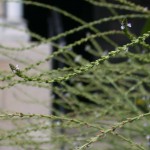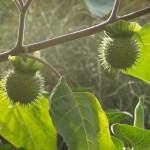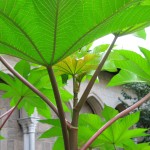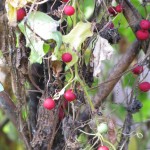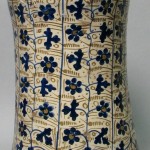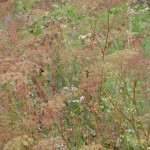Plants in Medieval Magic
Left: The powerful but beneficent vervain (Verbena officinalis) growing in the bed devoted to Plants Used in Medieval Magic in Bonnefont Cloister Herb Garden; Right: Seed capsules of the sinister and poisonous thornapple (Datura metel) growing nearby.
Trefoil, vervain, John???s-wort, dill,
Hinders witches of their will,
Weel is them, that weel may
Fast upon Saint Andrew???s day.???Traditional rhyme,??put into the mouth of the gypsy Meg Merrilies??by Sir Walter Scott in Guy Mannering.
Medieval calendar practices, and the plants??associated with them, were an amalgam of Greco-Roman and Celto-Germanic??observances with Christian beliefs and traditions. Many folk??rites??performed??at the thresholds between the seasons of the year were intended to avert storms, ward off diseases of cattle, and prevent the blighting of crops.?? All these misfortunes were attributed to the activities of witches. Read more »

